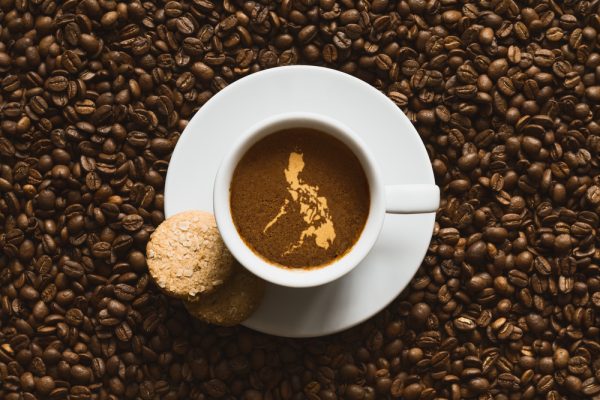In the global world of coffee, Filipino coffee culture stands tall as an up-and-coming leader in gourmet and specialty products. The Philippines is a leading producer of coffee, with its primary product being Robusta coffee. However, the wide range of microclimates that occur throughout the sprawling island creates perfect growing conditions for every type of coffee bean.
The Philippines has been producing coffee for centuries. In recent years, Filipino coffee has taken off, not just as an industry producer, but as a culture and community for specialty coffees made by local farmers and artisans. When exploring Filipino coffee, one can find a unique culture and product in every region of the country.
Why Filipino Coffee?
History of Filipino Coffee
Filipino coffee began production when it was still a Spanish colony in the 1700s. One popular myth tells the story of a Franciscan monk who brought Arabica beans to the country and planted them in his garden. These beans spread throughout the Philippines and made coffee a major crop for the country.
Coffee cultivation took off in the 1800s after the Spanish Real Sociedad Economica de Amigos del Pais de Pilipinas offered a prize of a thousand pesos to anyone who would plant sixty thousand square feet of coffee. The success of the victor, M. de La Gironiere, encouraged coffee cultivation among other Spanish settlers
Near the start of the 20th century, coffee production reduced due to disease and pests but by the mid-20th century, the Philippines began to gain traction again. In 1980, they officially became a member of the International Coffee Organization (ICO).
The annual coffee harvest measures out to about 25,000 metric tons, but that doesn’t stop some coffee processors from outsourcing to other countries. Filipino coffee culture is currently in a tug of war between locally grown products and imported beans brought through local processing. The Philippines Agricultural Department aims to fix this with plans in place to distribute loans, resources, and incentives for the coffee industry.
What Makes Filipino Coffee Good?
The Philippines is an island country in Southeast Asia consisting of more than 7,000 islands and islets. The many islands provide a wide range of microclimates that are excellent for coffee growth, with regular rainfall and mild temperatures.
The weather in the Philippines allows for all four types of coffee beans—robusta, arabica, liberica, and excelsia—to grow. Some of the most prominent regions for coffee production include the Cordillera Administrative Region, the Calabarzon, and the Benguet region
Filipino coffee excels beyond just growing, with each coffee company creating its own special form of processing and roasting to bring about unique flavors. In addition to the large international organizations producing coffee in the Philippines, every area has its share of local coffee companies creating specialty coffee through its own processing methods.
What is Filipino Coffee?
According to the Bureau of Agricultural Statistics, there are roughly 119,999 hectares devoted to coffee production in the Philippines. The country produces primarily Robusta coffee, which is used to make instant coffee. Robusta is known for its floral and dark chocolate notes.
About 5% of coffee production is dedicated to Arabica coffee, which provides notes of floral and caramel, and 3% to Liberica coffee, which is known for its strong taste and aroma. These varieties are considered higher quality beans. Each region provides its own benefit to coffee products such as soil, climate, or an organic growing method.
Sagada Coffee: The Sagada region is considered the Arabica capital of the Philippines. Beans there are known for their bittersweet and nutty flavors. This area also produces Kape Alamid, a type of coffee made from the dropping of civet cats. Sagada’s success is closely related to local laws and culture. Every household is required to plant coffee trees and many farmers follow traditional rituals in their planting and harvesting.
Kalinga Coffee: Kalinga coffee is noted for its strong coffee made from Robusta beans. The locals boil the grounds in water with brown sugar as their preferred preparation method.
Ilocos Coffee: Ilocos coffee is known for its quality. A Robusta variety is grown here and it has won first place in the Philippine Coffee Quality Competition in the past.
Batangas Coffee: Batangas grows the rarer Liberica variety of coffee. The locals refer to it as Kapeng Barako, meaning “strong man or manliness” in reference to its strong taste.
Benguet Coffee: Benguet is located in the Cordillera mountain ranges of North Luzon. The climate and soil produce some of the best Arabica coffee in the country. The organic farming practices here produce coffee with notes of apricot, lemongrass, and pomelo.
Sulu Archipelago Coffee: The coffee culture in the Sulu Archipelago is central to the local way of life. This area produces a coffee known as Kahawa Sug that is often served with food and an additional cup to pour the coffee back and forth as a cooling method.
Davao Coffee: Davao is a central location for specialty coffee in the Philippines. The fertile soil here produces a wide range of flavors in their coffee, from nutty, to fruity, to notes of chocolate.
Each of these regions is also known to have specialty coffee shops to sample local products and get a taste of the local coffee culture. Some of the most popular places for coffee tourism include Tagaytay and Antipolo.
Conclusion
Filipino coffee culture is a rich and robust community within the Philippines and can be found in every corner of the country. The long history of coffee production connects Filipino coffee producers to their land and culture and opens up an industry they can thrive in.
When dipping your toe into Filipino coffee, make sure to sample a wide variety of products. Each area of the Philippines provides a unique experience with coffee. Each region provides its own climate, farming practices, and processing methods paired with local coffee preparation and consumption culture, creating a hyperlocal coffee experience that connects communities.

